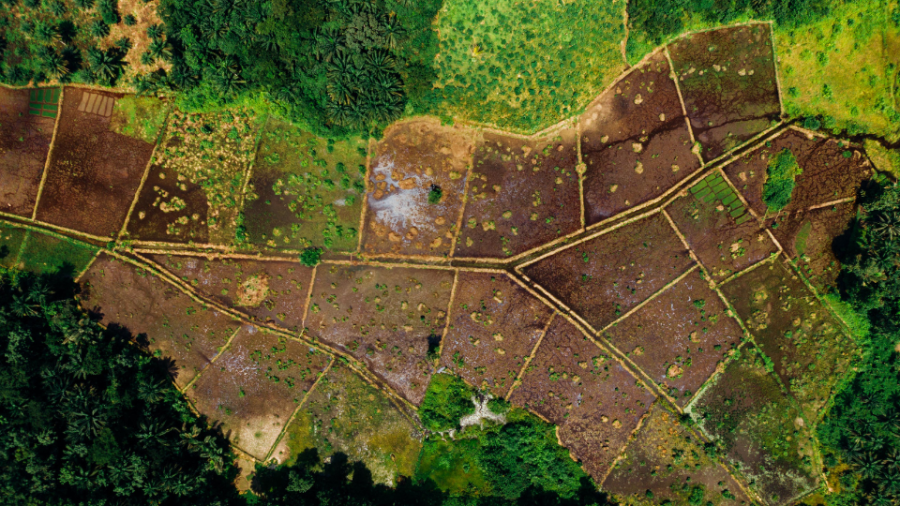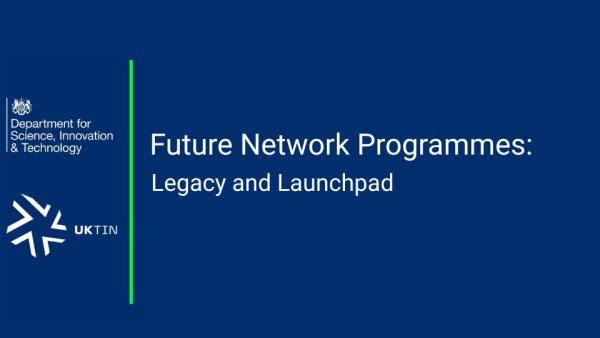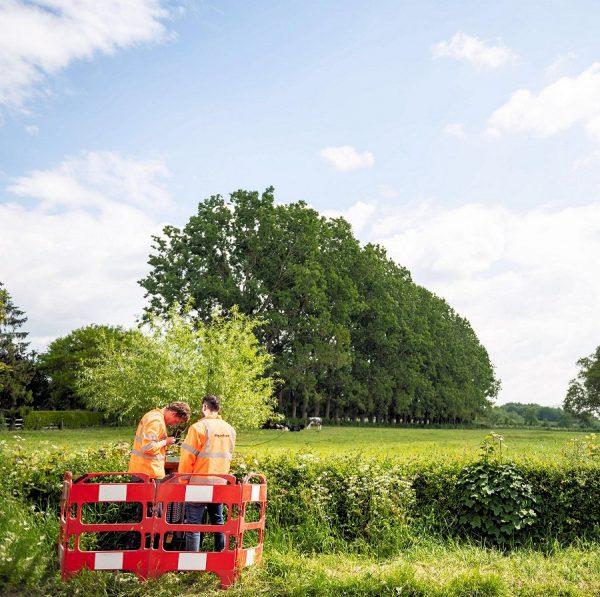
As the Future Network Programme concludes, UKTIN is working with DSIT to reflect on the government-funded projects, outlining the key outcomes and the lessons learned to help improve future telecoms initiatives.
Improving digital connectivity and supporting innovation is critical for the UK’s economy. Some of our country’s most profitable industries including tourism and farming are based in hard-to-reach areas, with rural England contributing 16.2% of the country's total gross value added (GVA) in 2022.
Future Network Programmes – Agritech/Rural industries project overviews
The Growing Sussex 5G Innovation Region
A series of new private 5G networks are transforming food and wine production across West Sussex, enabling local businesses with the tools and skills to thrive in the digital age. This transformative initiative is also co-developing foundational technologies (5G, AI and IoT) with telecoms and technology partners, education centres and commercial producers. The use cases will test how digital technology and applications, including sensors, monitors, drones and cameras can develop future farming and growing practices that increase sustainable food, drink and plant productivity.
From autonomous tractors to advanced drones, the project is trialling innovations and increasing the uptake of 5G technology to improve productivity, yields and profitability. The initiative is catalysing change between commercial growers and specialist agricultural education colleges to develop teaching approaches and data sets that complement future growing practices, inspire innovation and foster the development of a local digitally skilled workforce.
Jo Fuber, Relationship Manager at West Sussex County Council, said, “We have begun collaborating with four local delivery partners. The first, West Sussex Growers, is a significant part of the local economy with a retail value of over £1 billion per year, employing over 9,000 full-time workers.”
The River Severn Partnership
The River Severn Partnership – managed by Shropshire Council and supported by Birmingham City University, Water Resources West, Warwickshire and Worcestershire – is demonstrating the viability of advanced wireless technology to reduce flood risk, secure future water resources and improve and deliver shared natural assets.
Its use cases include precision irrigation, rainfall nowcasting, real-time water quality measurement and smart abstraction. In addition, 5G enabled Agri-Tech applications are being trialled on 30 university and commercial farms. Almost 500 firms from key sectors in the region are expected to engage with the project. The broad reach of these projects, both geographically and technically, stretches across the whole of the River Severn Partnership region.
The current land value at risk of fluvial flooding is over £20 billion and the average annual cost of flooding is over £28 million. Technology-led innovation will save the catchment area time and money while preserving the natural environment.
Matt Smith, the Programme Manager for the River Severn Partnership Advanced Wireless Innovation Region, said: “From the public perspective, we have identified a series of digital champions from each of the organisations and are working on a bunch of collaborative projects, including coming up with policy solutions to some of the problems facing wireless deployment and adoption. We are producing small-scale use cases as well. On the enabling side, we are undertaking the UK’s largest ever independent Mobile coverage survey with Streetwave, and providing booster loans and small grants.”
The North East Combined Authority 5G Innovation Region
The North East CA is home to 2 million people, 55,000 businesses and 3 cities, including extensive rural and coastal communities – and its organisations are at the forefront of digital innovation. Advanced wireless sensor technology is being installed on farms to drive automation, increase efficiency, and improve the environmental sustainability of farming using real data collected from on-farm crops, soil, livestock and environmental sensors.
Following the early mobilisation of the project teams and partners, the project has completed a network installation with the deployment of sensors and software solutions.
Janet Ross, the Digital Infrastructure and Delivery Manager at the North East Combined Authority, said: ‘From a mobile perspective, 13% of Northumberland and 6% of Durham have no mobile coverage. If we want to build a region of excellence for 5G and other digital infrastructure, we need to level up and address the levels of disparity across the region. We want everybody to be able to access connectivity in the same way.”
The Borderlands 5G Innovation Region
Rural tourism is a key part of the Borderlands economy. The region has fewer than 1 million residents, most of whom live in Cumbria, but welcomed more than 63 million visits in 2019. Due to the levels of visitors to the region, there is very high demand for connectivity but historically rural areas have struggled to attract commercial investment.
The 5GIR Programme has therefore focused on 5G deployment and models of sustainability to support tourist operations and the visitor experience at five venues: Destination Tweed; Kielder; Hadrian’s Wall; Stranraer; and Windermere. It is anticipated that additional venues will be selected for further deployment after March 2025.
Catherine Weldon, Programme Manager at Connecting Cumbria, said, “My highlight so far has been demonstrating and testing the equipment at Bowness Christmas Market and Kielder Observatory. I felt proud watching our hard work come to life in real-time.”
REACH (Blackpool)
In an exciting cross-project collaboration, REACH, Borderlands 5GIR and 5G Drive have deployed connectivity to remote rural areas that previously had no coverage. Three 4G sites have been installed using the wavemobile M3Q 4G base station from cellXica: The Bridge Hotel in Buttermere, Gatesgarth Farm, Honister Path, and Honister Slate Mine, Honister Pass.
The initiative has connected local communities and supports mission-critical use cases including search and rescue: according to the BBC, 2024 was a record year for callouts. Teams must be able to communicate with each other, in addition to responders such as the police, fire and ambulance services. People’s lives depend on effective connectivity.
Graham Worsley of REACH identified a push to video over mission-critical networks as a project highlight. They have also used drones, which offer efficient coverage of large areas, access to challenging terrains, and are quick and cost-effective to deploy. Drones have already been directly involved in saving the lives of more than 1000 people around the globe reported DJI, a technology company.
Ceredigion County Council
In Wales, the Ceredigion County Council is deploying Low Earth Orbit (LEO) satellite-supported LoRaWAN technology, addressing the critical need for reliable data collection and connectivity in rural areas where coverage is usually limited. The project hopes to safeguard the river ecosystem while complying with environmental regulations.
Advanced sensors and IoT devices have been deployed to collect real-time data on phosphate and nitrate levels, supported by a Nutrient Monitoring Dashboard that provides accessible and actionable insights for stakeholders; SCADA systems and automated alerts have been introduced to enable the rapid identification and resolution of pollution sources, reducing the need for routine site visits while improving ecosystem health monitoring.
In addition, enhanced LoRaWAN infrastructure and satellite communication systems have been implemented to ensure continuous data transmission from remote monitoring stations. Designed with scalability in mind, the system is ready to support the deployment of additional devices, ensuring broader monitoring coverage and more effective management as the project expands.
Clifford Shapland, Ceredigion City Council, said: “The project has successfully brought together Clearwater Sensors and Lacuna Space Ltd, enabling these distinct suppliers to collaborate and integrate their systems to meet project requirements. This partnership has not only enhanced river monitoring capabilities but also fostered opportunities for developing innovative systems for future applications, including fresh and marine water monitoring.”









